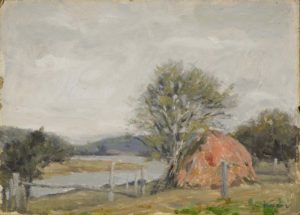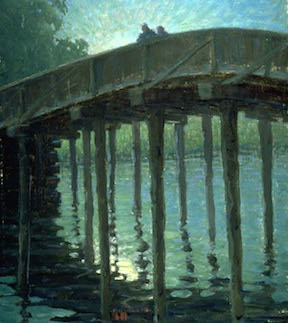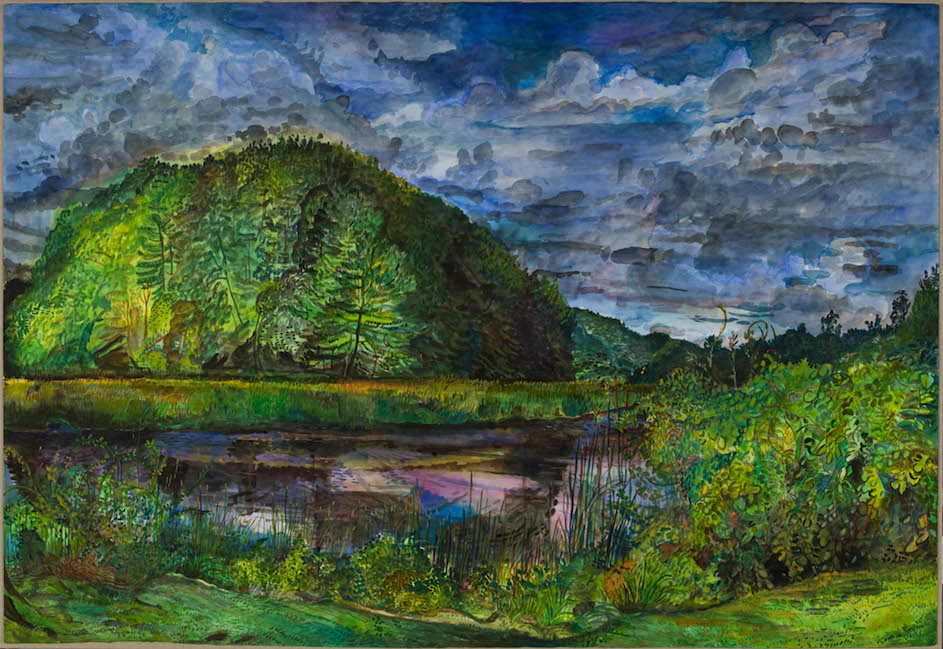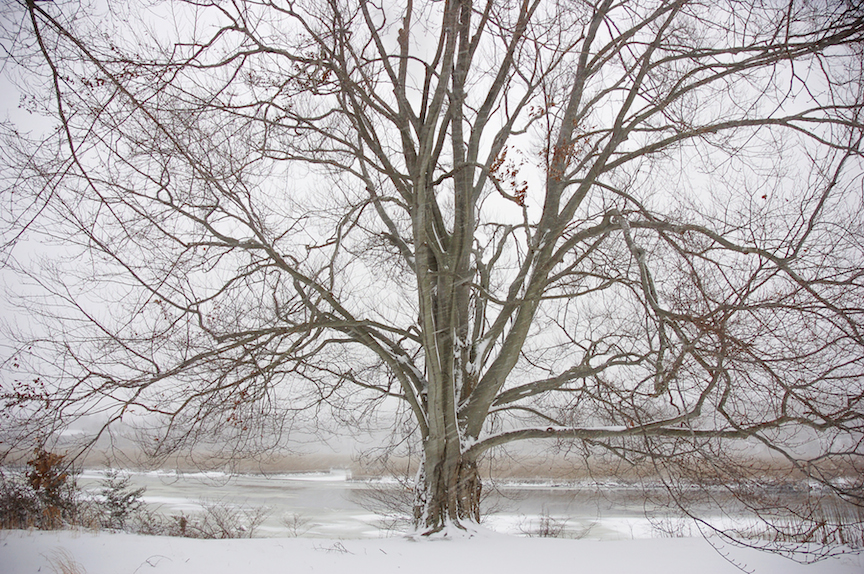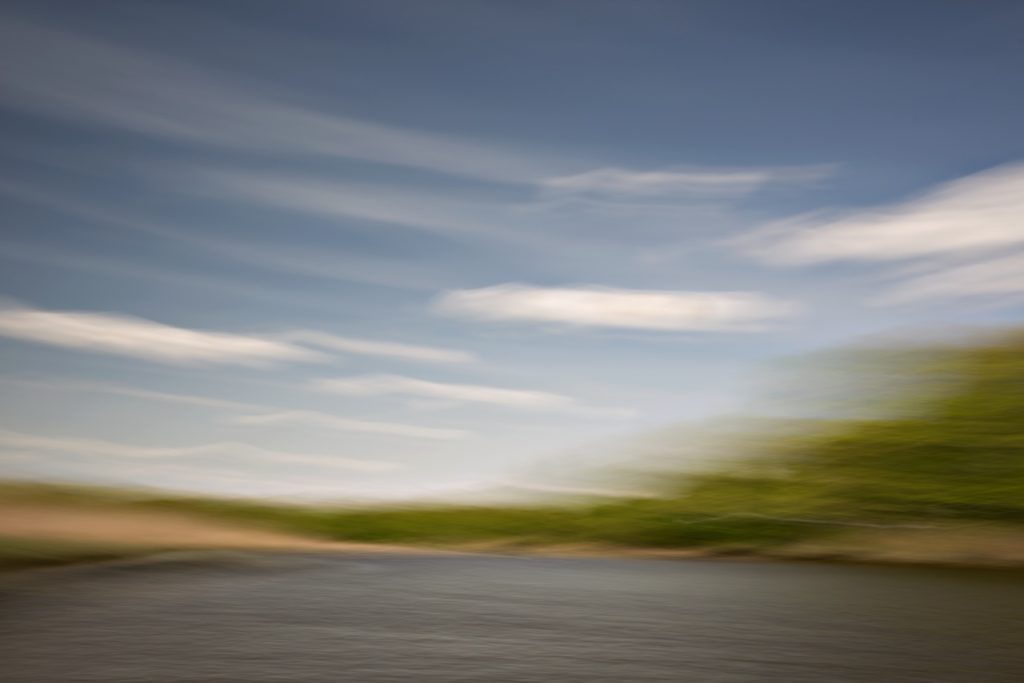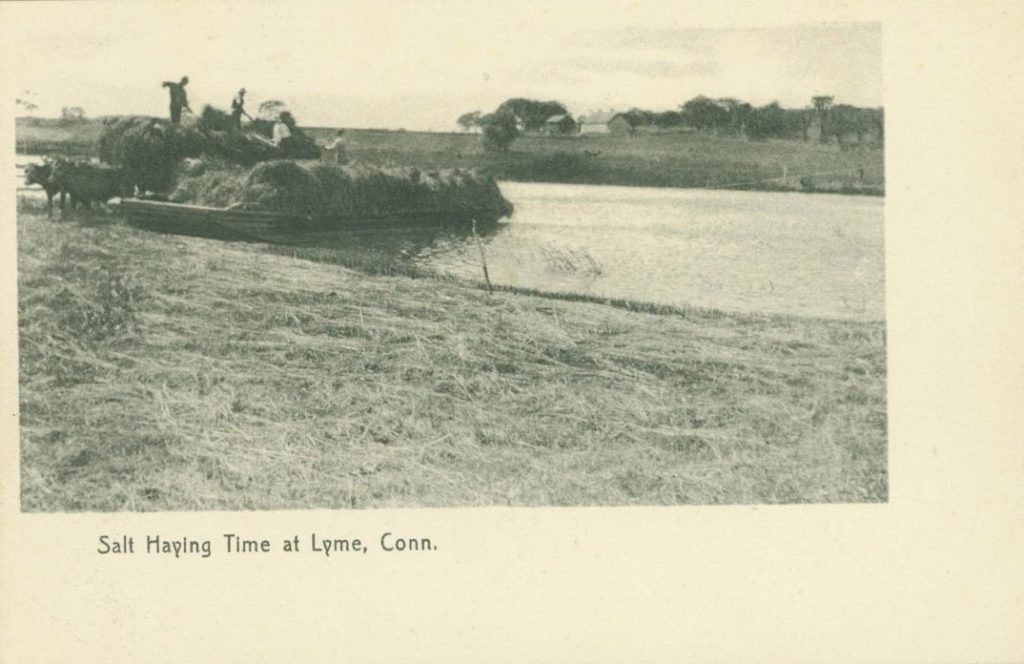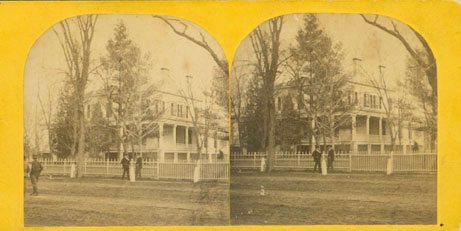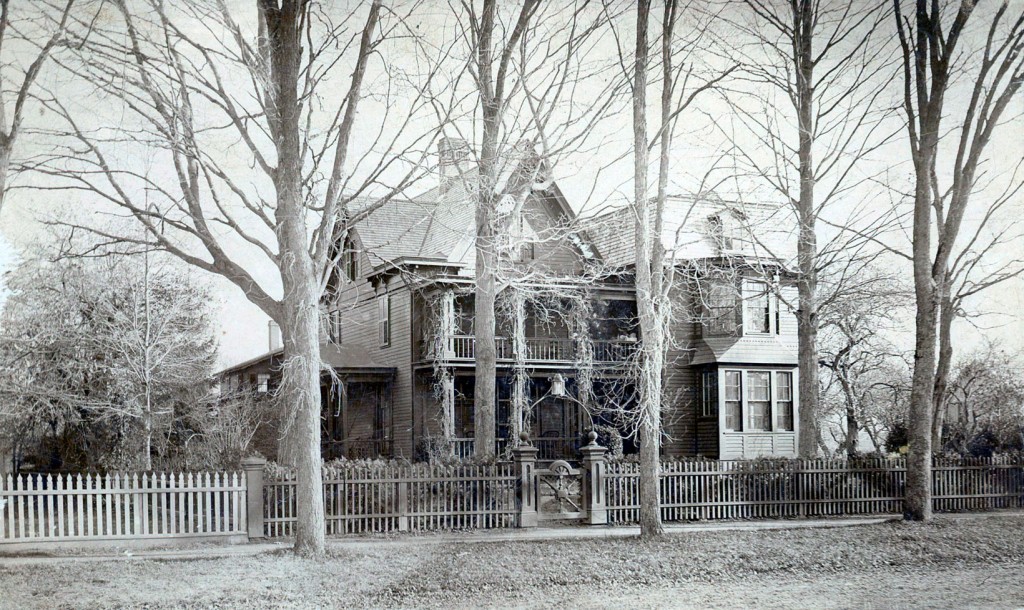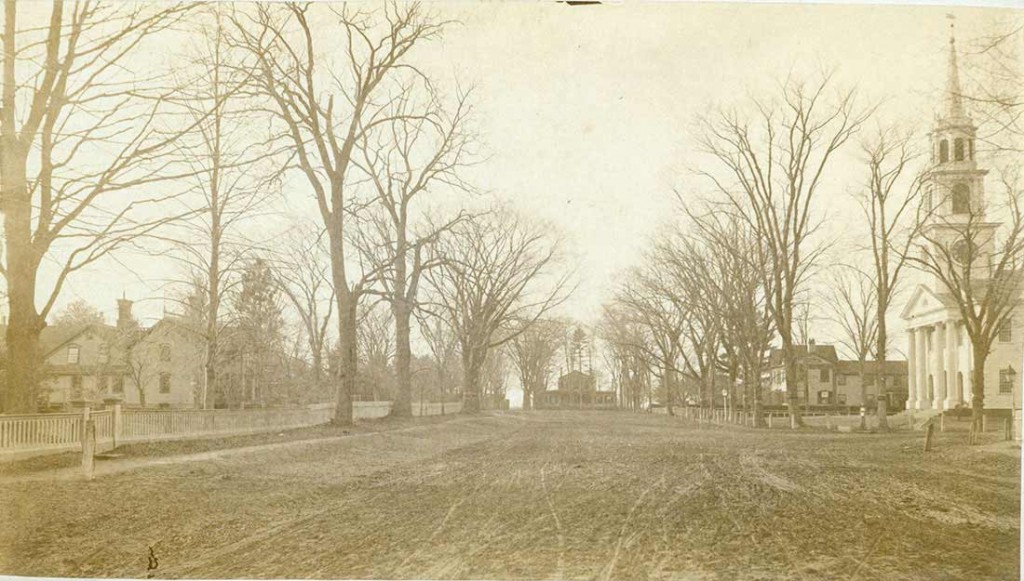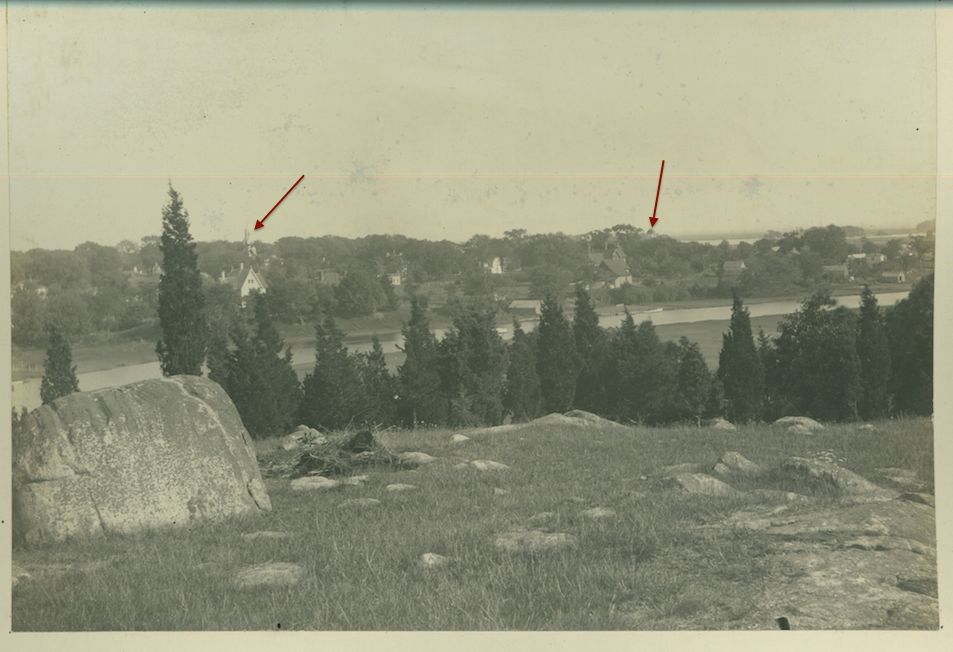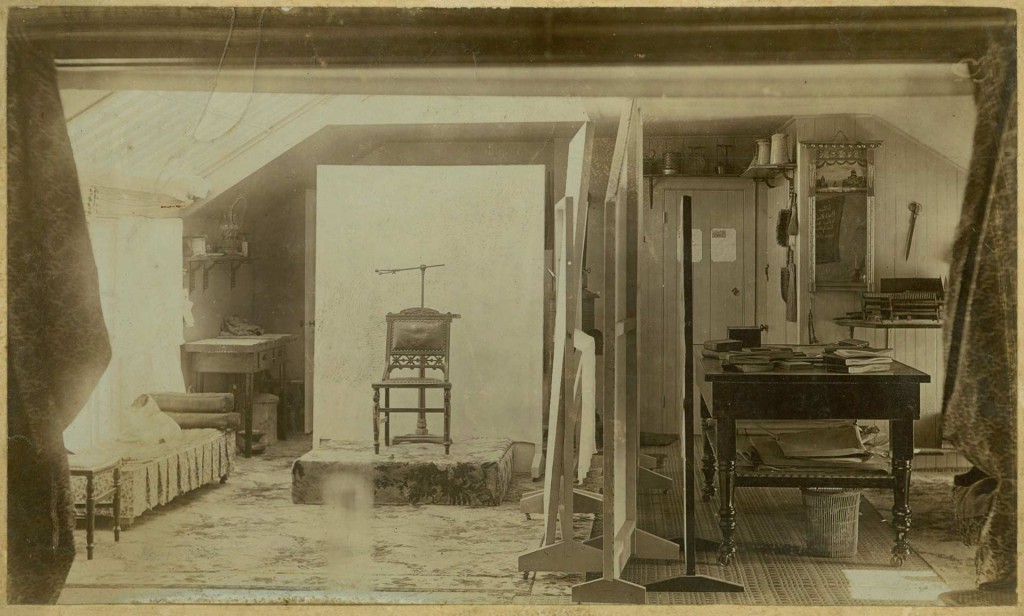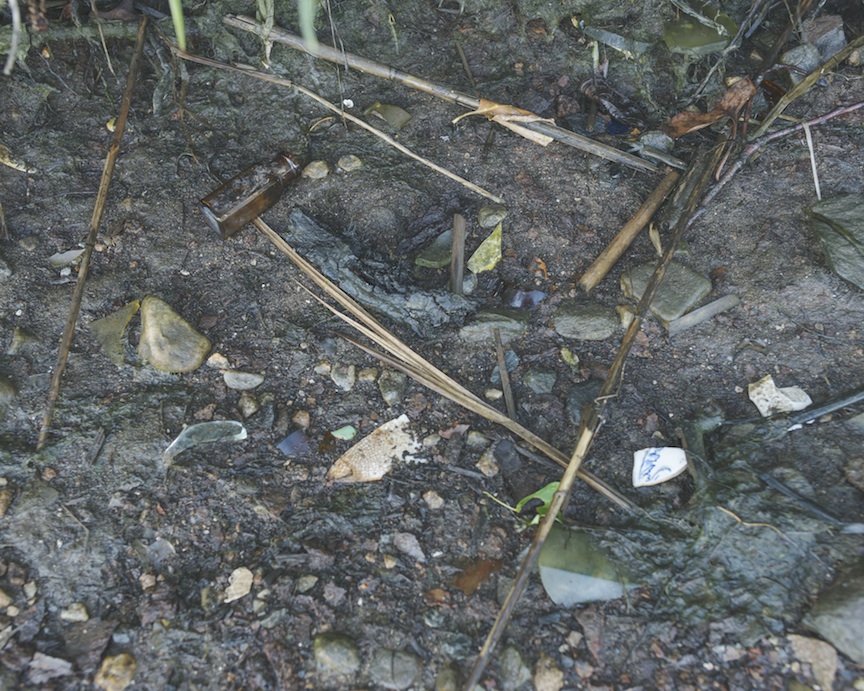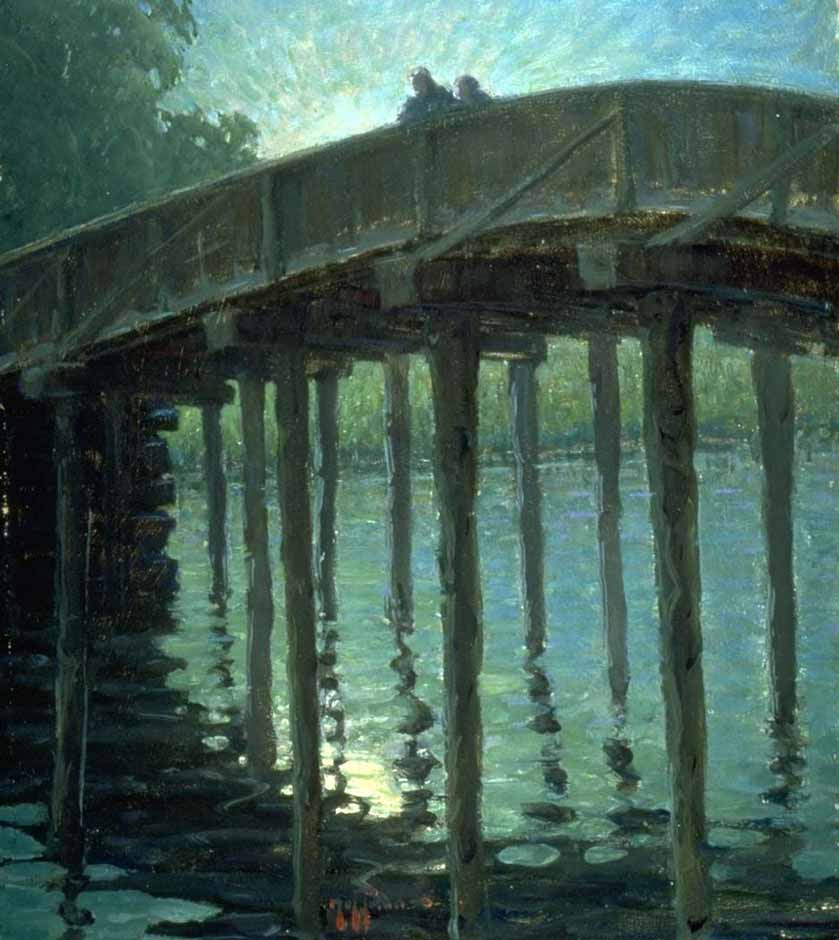
Harry Hoffman (1871-1964) Bridging the Lieutenant, c. 1906 Oil on canvas board Gift of Mrs. Morris Joseloff
by Carolyn Wakeman
Featured Image: James Welling, 8147, 2016. Inkjet on rag paper. Courtesy of the artist and David Zwirner, New York
Several of the boldly evocative photographic studies created for the Florence Griswold Museum’s fall 2016 exhibition In Place: Contemporary Photographers Envision a Museum direct the viewer’s gaze to the nearby Lieutenant River. Once a vital transportation route for timber and salt hay, the river and the wooden Bow Bridge that in 1830 spanned its upper course became popular subjects for Lyme Art Colony painters who gathered at Florence Griswold’s home. Viewed from the grounds of her estate, the hill opposite her earthen dock provided a backdrop, both then and later, for richly varied drawings, etchings, and paintings of the riverbanks.
Charles Vezin, On the Lieutenant. Oil on artist board. Florence Griswold Museum, Purchase, 2002.13
Harry Hoffman, Bridging the Lieutenant, ca. 1906. Oil on canvas board. Florence Griswold Museum. Gift of Mrs. Morris Joseloff, 1963.4
Nancy Friese, Lieutenant River Shore, 2010. Watercolor on paper mounted on linen. Florence Griswold Museum, Purchased with an Anonymous Gift
Photographers featured in the museum’s current exhibition explore with fresh insight and innovative technique the aesthetic possibilities of the river setting. As a flattened blue expanse in James Welling’s lyrical portrait of stillness, the river sharpens intimate details of the abundant plant life along its edges. As a snow covered path in Tom Zetterstrom’s vision of a majestic beech tree in winter, the mist-shrouded river recedes in a muted backdrop. As a swath of dazzling color in Peter Daitch’s abstract motion study, the river becomes transformed into a sweep of light.
Tom Zetterstrom, European Beech on the Lieutenant River, 2016. Archival pigment ink print. Courtesy of the artist
Peter Daitch, Lieutenant River Series 1-#6, 2016. Archival print, 2016. Courtesy of the artist
Such explorations of the river’s scenic potential would not have occurred to early 20th-century photographers. As the horse-drawn carriage and the touring bicycle gave way to the automobile and the tractor, the riverbank signified an unchanging agricultural space. Multiple images of working oxcarts piled with salt hay, widely reproduced on postcards published by local storekeeper W. F. Clark, helped position scenic Old Lyme as a rural refuge from modernizing and urbanizing trends.
Ox team with scow and salt hay, postcard. Lyme Historical Society Archives (LHSA) at the Florence Griswold Museum
For the exceptionally talented local photographer Richard S. Griswold, Jr., who created extensive views of the town in the Victorian era, the natural landscape often served as a frame through which to view Old Lyme’s distinctive architecture. With careful attention to composition and detail, Mr. Griswold photographed houses, shops, churches, schools, bridges, and streetscapes together with the surrounding trees, shrubs, and lawns. His keen sense of place combined with his technical skill resulted in an extraordinary visual record of Old Lyme at a moment when prominent residents were improving their homes and encouraging the expansion and enhancement of community facilities. Among many other subjects, he photographed the handsome graded school built in 1885, the elegantly restored interior of the Congregational Church decorated for a harvest festival in 1888, and the stately town library dedicated in 1898.
Boxwood, home of photographer Richard S. Griswold, Jr., in a view perhaps created with his own stereoscopic lens, ca. 1880. Lyme Historical Society Archives (LHSA) at the Florence Griswold Museum
Richard S. Griswold, Jr., Joseph Perkins house, ca. 1890. Lyme Historical Society Archives (LHSA) at the Florence Griswold Museum
Richard S. Griswold, Jr., Lyme Street, showing Congregational Church, ca. 1885. Courtesy Ludington Family Collection
Landscape became a primary focus for Richard Griswold in about 1885 when he climbed a steep rise on the west bank of the Lieutenant River. Looking east toward the Meetinghouse Hills, he recorded in a series of five views the meandering river that had served since the earliest settlement as an important agricultural and commercial waterway. Positioning his camera atop the hill that residents called “the mountain,” he created a sweeping panorama that traced the river’s course from the Bow Bridge and the open fields near Miss Florence’s home to the expanse of salt meadows at the tributary’s mouth.
Richard S. Griswold, Jr., View of Lieutenant River from the Mountain, showing Bow Bridge, ca. 1885. Lyme Historical Society Archives (LHSA) at the Florence Griswold Museum
The vantage point of Mr. Griswold’s camera is today unfamiliar, but if we join him on the overlook provided by “the mountain,” suddenly we view Old Lyme from the perspective of its important waterway. One image in the series, yellowed with age, shows the river’s east bank above the lower bridge. In the distance the cupola of the Pierrepont House, the town’s primary guest facility, and the steeple of the Congregational Church protrude above the trees. Most of the homes, barns, and sheds in the foreground have now disappeared, but the image reminds us of the Lieutenant River’s continuing significance in the economic and agricultural life of the town.
Richard S. Griswold, Jr., View of Lieutenant River from the Mountain, showing Congregational Church steeple and Pierrepont House in the distance, ca. 1885. Lyme Historical Society Archives (LHSA) at the Florence Griswold Museum
Richard S. Griswold, Jr., Photography studio, Boxwood, ca. 1885. Lyme Historical Society Archives (LHSA) at the Florence Griswold Museum
Richard Griswold developed his photographs in the professional studio he had assembled in his gracious brick home on Lyme Street called Boxwood. In a will drafted shortly before his death in 1904, he distributed to his children his five cameras and multiple lenses along with other photographic equipment. Over some twenty years, working with fragile glass negatives and mounting his prints on stiff paper stock, he created hundreds of 8 x 4 ½ inch images that capture a distinguished community in an earlier era. But Mr. Griswold would likely have been baffled by impressions of the Lieutenant River that innovative photographers would exhibit in 2016. With his preference for the panoramic, an appreciation of pattern and beauty in the mud-soaked reeds in the river’s mud flats at low tide would await another viewer.
Marion Belanger, Outside Edge, 2016. Archival pigment print. Collection of the artist

